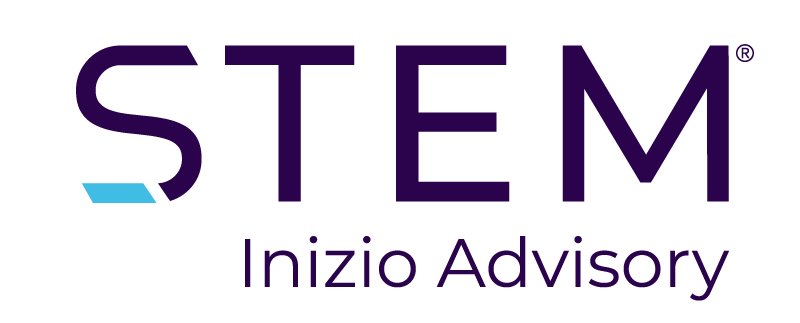Authored by: Lee Hester, STEM Healthcare AVP Operational Excellence
The life science market has become very active. Although annual drug approvals have remained steady for the past 3-4 years, there has been remarkable growth compared to the previous decade. From 2000 to 2008, the FDA approved 209 drugs, while from 2009 to 2017, they approved 302 [1]. As the industry shifts towards rare and orphan disease areas and more launches, finding new ways to engage with influential thought leaders is essential. This directly affects the direction and focus of Medical Science Liaisons (MSLs) efforts.
In today’s world, abundant information can make it difficult for a product to stand out based solely on its clinical data. Solid scientific research is no longer sufficient to generate excitement within the medical community. To ensure a successful product launch, a well-thought-out strategy is equally important.
Identifying and engaging thought leaders early to inform product launch excellence
When life science companies prepare for commercialization, they face the difficult task of identifying thought leaders and determining their impact on healthcare professionals (HCPs) and their ability to influence others in promoting product launch success. Understanding how they interact and affect the connection between academic centers and community hospitals is equally essential. These relationships can differ significantly depending on the disease state and geographic location. This engagement is crucial if a company launches a product in a new or related disease state.
STEM Healthcare AVP Operational Excellence Lee Hester, explains how using field medical teams earlier in commercialization planning can broaden the remit and address challenges.
Early engagement
Medical teams are involved up to two and a half years before launch. They focus on identifying and developing thought leaders, engaging with them, and gaining insights from these interactions. These insights and data include information on the unmet need, healthcare professionals’ treatment protocols, patient identification, disease management, patient journeys, and competitive assets.
‘Listening’ to understand unmet needs
After gaining knowledge on the appropriate target audience and locations to engage with, MSLs must determine their approach and message. They must understand the best way to communicate and what information they should share. Additionally, they need to gather insights into how healthcare professionals perceive the disease and their competitors.
When MSLs interact with HCPs, an essential aspect is obtaining their opinions on the disease state. To achieve this, MSLs should inquire about patient treatment, identification, and management techniques. Additionally, understanding the current treatment methodologies and identifying unmet needs is crucial. It is vital to raise awareness about the disease within the clinical community and understand their perspectives on diagnosis and treatment, as it significantly impacts the success of a launch.
Through thought leader discussions, commercial teams must understand the white space in unmet needs. These insights can shape their launch strategy and campaign messages.
Strategic consideration for geographic footprint
One important aspect to consider is the location of clinical trial sites. It is crucial to ensure that thought leaders who have been identified are located within the institutions involved. This helps the thought leaders gain practical experience with the product, which enhances their credibility with other healthcare professionals (HCPs). As a result, they can better advocate for the product when it is finally approved.
The more strategic a company can be here, the easier it is to develop a good breadth of thought leadership across the country and globally.
Mapping referral pathways
It is crucial to map out referral patterns and pathways in specific areas to provide MSLs with clear guidelines on whom to approach and where. Although MSLs can identify thought leaders, they require direction from leadership to prevent excessive churn. Companies should categorize their audiences, allowing MSLs to target key thought leaders directly while the company engages other influencers or treaters through different channels. Usually, MSLs concentrate on engaging influencers at academic centers, but other players at the community level can be targeted more efficiently and directly through omnichannel approaches.
Key decision-makers at organized customers
MSLs must connect with essential decision-makers at organized customers, such as payers and Integrated Delivery Networks (IDNs), who significantly determine product access for the population. MSLs should convey scientific information and gather insights into how customers perceive the disease state and which data they find relevant in shaping their formulary decisions. Since these customers often make such decisions well before a product launch, field medical teams must engage with them early.
Developing a robust medical narrative early on is essential
The industry needs to improve its storytelling abilities to promote its products effectively. One way to achieve this is by expanding the role of MSLs when interacting with thought leaders, creating mutual visibility between medical and commercial strategies.
MSLs require a scientific or medical communication platform to convey their message to influential thinkers. This platform may need modifications depending on the clinical phase of the asset. The conversations aim to gather insights that inform the strategy and messaging, resulting in intelligent iterations.
Field medical teams should receive guidance on discussing topics, questions to ask and listen for, sharing relevant data, and obtaining feedback from leadership. A continuous learning and feedback loop that collects data and uses it to improve scientific platforms, launch plans, messaging, and patient experience roadmaps will lead to more successful launches.
Maximizing time at congresses and conventions
MSLs can generate excitement at congresses or conventions and follow up with robust data analysis. While these events can be expensive, maximizing opportunities for insight makes good business sense and helps establish meaningful relationships with thought leaders in an elegant and impactful way.
Strategic awareness and alignment
Medical teams have strategic priorities that commercial organizations should not influence. However, organizations need to ensure that there are no structural vacuums and that communication and cross-visibility into medical teams’ priorities and strategies are maintained. This understanding is crucial for successful collaboration. Medical teams must keep their company’s broader goals in mind when seeking to engage thought leaders.
For instance, they may be planning to expand into new geographies or disease states, which would require post-approval trials. The involvement and focus of MSLs will vary over the product’s lifecycle, so the organization must communicate clearly what they expect the MSLs to do and when. This will help MSLs stay focused and effective. The more information MSLs have, the better they can gather facts and support meaningful interactions that generate valuable data.
The MSL plays a crucial role in achieving product launch excellence. They assist organizations in collecting and presenting scientific data that effectively conveys the product’s worth to healthcare professionals, aiding in its success amidst competing products.
Find out how we can support the success of your field medical teams.
End note:

